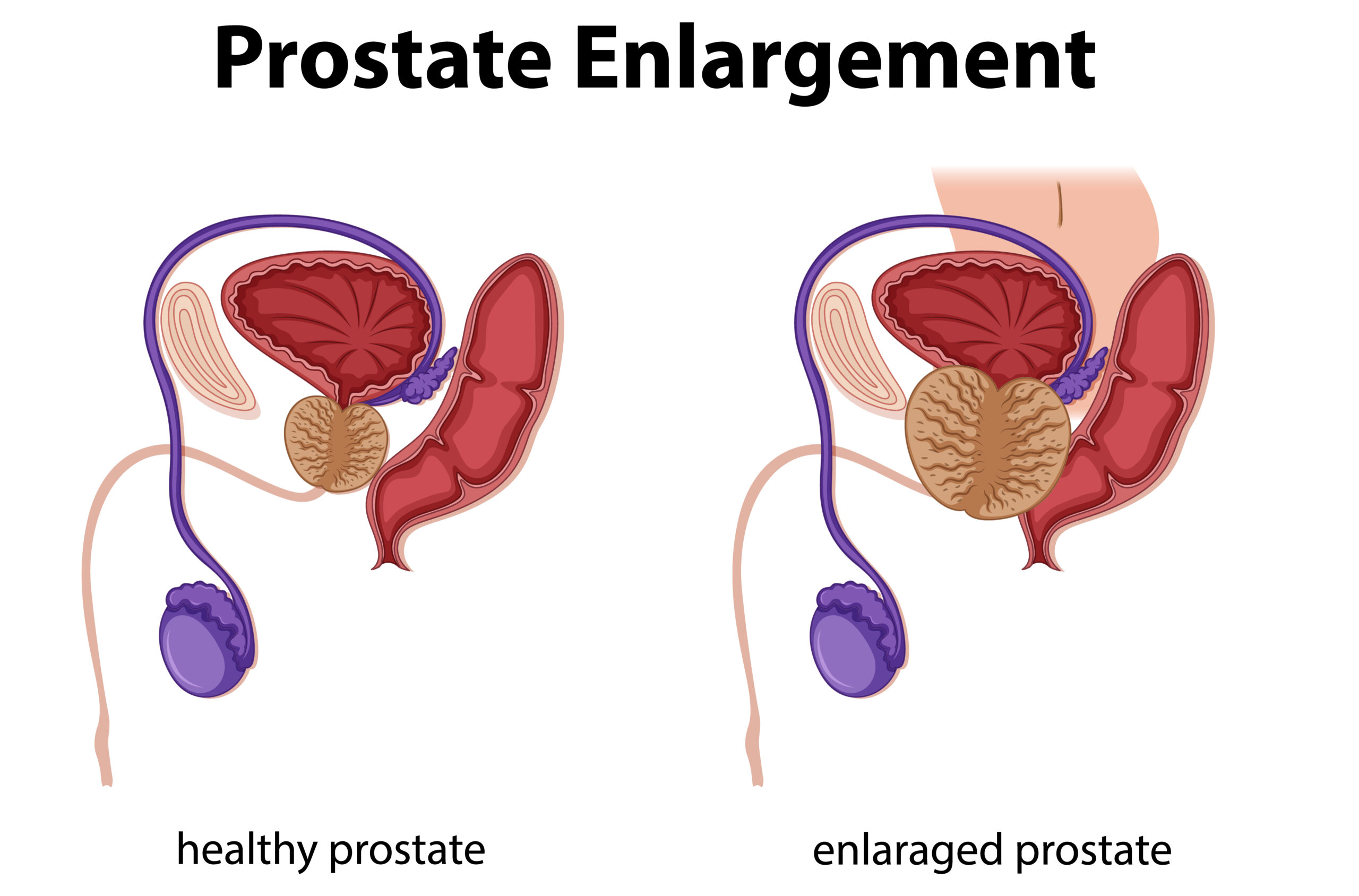Prostate enlargement, medically known as benign prostatic hyperplasia (BPH), is a common condition that affects many men as they age. This enlargement of the prostate gland can lead to various urinary symptoms and discomfort. In this article, we will explore the causes, symptoms, diagnosis, and treatment options for prostate enlargement.
Causes of Prostate Enlargement (BPH)
The exact cause of prostate enlargement is not fully understood, but it is believed to be primarily related to hormonal changes that occur as men age. Key factors contributing to BPH include:
- Age: Prostate enlargement is more common in older men, particularly those over the age of 50.
- Hormonal Changes: An imbalance in the hormones testosterone and estrogen is thought to play a significant role in prostate growth.
- Family History: A family history of BPH may increase the risk of developing the condition.
- Lifestyle Factors: Obesity, lack of physical activity, and poor dietary choices may contribute to BPH development.
Symptoms of Prostate Enlargement
The symptoms of prostate enlargement can vary in severity and may include:
- Urinary Frequency: An increased need to urinate, especially during the night (nocturia).
- Urgency: A sudden and strong urge to urinate.
- Weak Urine Stream: A reduced force of urine flow.
- Hesitation: Difficulty starting urination.
- Incomplete Emptying: Feeling as though the bladder is not fully emptied after urination.
- Dribbling: Urine dribbling after urination is complete.
- Straining: Straining to urinate.
- Intermittent Flow: The flow of urine starts and stops.
- Urinary Tract Infections (UTIs): BPH can increase the risk of UTIs due to incomplete bladder emptying.
Diagnosis of Prostate Enlargement
Diagnosing prostate enlargement typically involves a thorough medical evaluation, which may include the following:
- Medical History: A detailed discussion of symptoms, medical history, and family history.
- Digital Rectal Examination (DRE): A physical examination in which a healthcare provider assesses the size and condition of the prostate by inserting a gloved finger into the rectum.
- Ultrasound: An ultrasound of the prostate may be performed to assess its size and shape. Other prostate conditions such as cancer or syones can be detected .
- Prostate-Specific Antigen (PSA) Test: A blood test to measure PSA levels, which can help screen for prostate conditions. Elevated PSA levels can indicate BPH or other issues such as Prostate cancer which has marked elevated levels.
- Urinalysis: A urine sample may be analyzed to check for signs of infection or other urinary tract problems.
- Urodynamic Studies: In some cases, specialized tests may be conducted to assess bladder function and urinary flow.
Treatment of Prostate Enlargement
The treatment of prostate enlargement depends on the severity of symptoms, the impact on the individual's quality of life, and overall health. Treatment options include:
- Watchful Waiting: In cases with mild or no bothersome symptoms, a healthcare provider may recommend monitoring the condition without immediate treatment.
- Medications:
- Alpha-Blockers: These medications relax the muscles around the prostate, improving urine flow and reducing symptoms.
- 5-Alpha Reductase Inhibitors: These drugs reduce the size of the prostate gland by inhibiting the production of hormones that contribute to its growth.
- Combination Therapy: A combination of alpha-blockers and 5-alpha reductase inhibitors may be prescribed in some cases.
3. Minimally Invasive Procedures:
- Transurethral Resection of the Prostate (TURP): A surgical procedure in which excess prostate tissue is removed.
- Transurethral Incision of the Prostate (TUIP): A procedure to widen the urethra by making small incisions in the prostate tissue.
4. Laser Therapy: Laser procedures can target and remove excess prostate tissue to relieve symptoms.
5. Prostatic Urethral Lift (UroLift): A minimally invasive procedure that uses implants to hold the enlarged prostate tissue away from the urethra, improving urine flow.
6. Surgery: In cases of severe BPH or complications, surgical removal of the prostate gland (prostatectomy) may be necessary.
- Long term risks of open simple prostatectomy include:
- Urinary incontinence.
- Dry orgasm.
- Erectile dysfunction (impotence)
- Narrowing (stricture) of the urethra or bladder neck.
Conclusion
Prostate enlargement, or benign prostatic hyperplasia (BPH), is a common condition among aging men that can lead to bothersome urinary symptoms. Early diagnosis and appropriate treatment can help manage these symptoms and improve the quality of life for affected individuals. It is essential for men experiencing urinary issues to seek medical evaluation and discuss treatment options with a healthcare provider.
